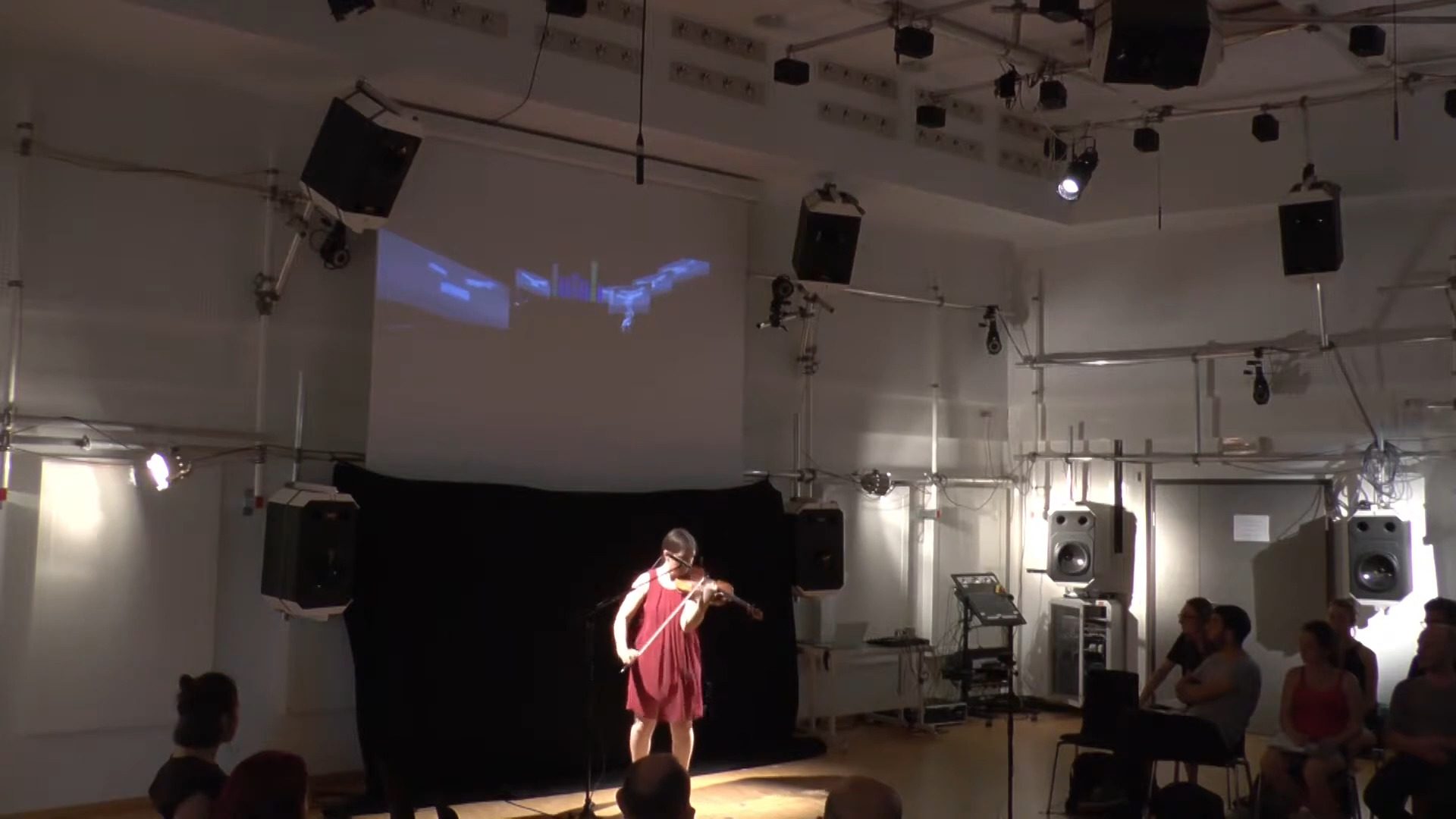Audiovisual game-performance for instrumentalist and computer system
A music game between a performer with her past, a metaphor for the vain struggle of keeping our memories alive.
The audiovisual feedback delay network allows audiovisual fractal textures to emerge from the improvisatory actions of the performer. The network is established by 8 audiovisual delay lines that are integrated and feed each other. The audio delay-lines are played by 8 spatialized loudspeakers while the visual delay-lines appear as 8 sub-windows on the projection screen. Each delay-line oscillates between past and present, suggesting a poetic allegory for our accumulated experiences in our brains.
The delay-lines have an inherent mechanism that drives them towards the past. The performer, following a performative protocol which involves listening walks, tries to keep them as long as possible near the present. The end comes when the delay-lines inevitably disappear in the past. The essence of the piece lies in this futile paradox, a game that is meant to be lost, as it is the case with all of our subjective and intersubjective memories. In each performance, a truly unique course of music events will unfold due to the unpredictability of the performers’ actions, the complexity of the emerging audiovisual textures and their intricate coupling.
The audience is witnessing a dynamic autopoetic process which refers to their present experience of time and space. The piece, which is informed by open form experiments, algorithmic composition, live-electronic and ecosystemic practices, achieves also a meta-level status. Its performative and computerized mechanisms enable a performance to come about, which let music arise as emergent phenomenon. The improvisation material, as well as the musical instrument and playing techniques are variable and subject to the creative responsibility of the performer. Compositional elements can be prepared in advance or/and left to impulsive improvisatory actions. Very diverse performances can be composed, while all of them can be identified by the same performative and audiovisually transformative process.
